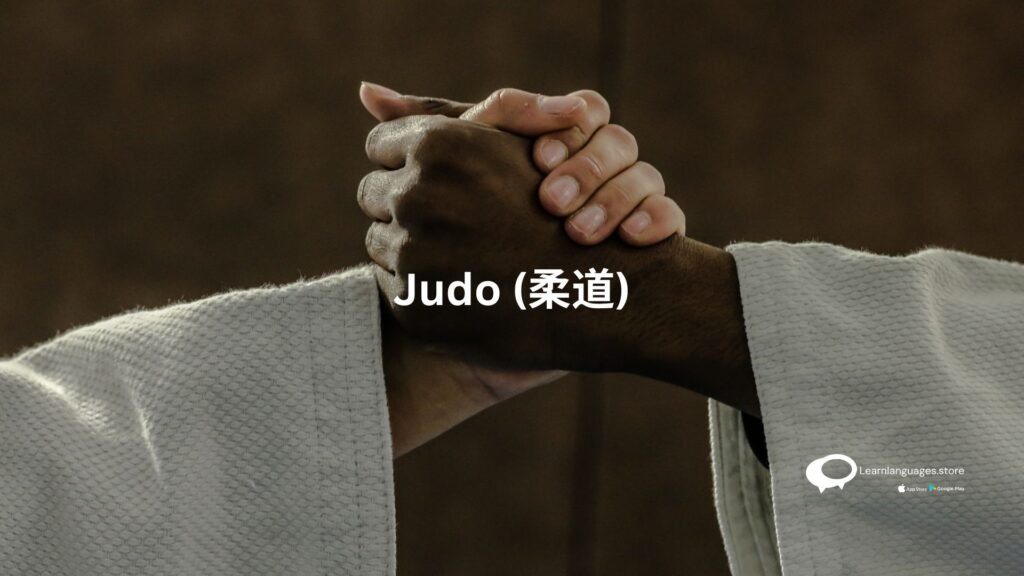Martial Arts Types and Forms
Martial Arts Types and Forms
Japanese martial arts can be traced back to the customs of the samurai. In the past, samurai warriors had to be good with a wide range of weapons. But later, people in Japan made it illegal to do this.
There are many different types of martial arts with different techniques, such as Jujutsu, Kendo, and many others. These fighting and self-defense methods, which were first based on martial arts, teach each practitioner different rules and beliefs.
Why not learn about Japanese martial arts, which people all over the world practise and love? This article gives information about some of the most well-known Japanese martial arts.

How Do Martial Arts Work?
Martial arts practised for a variety of reasons, such as self-defense, mandatory military duty, entertainment, competition, fitness, etc., involve any or a variety of combat tactics. Martial arts come in a variety of forms, ranging from hand-to-hand combat to the use of various weapons.
In Japanese martial arts, the phrase Kory bujutsu (Jujutsu, Sumo, Swordsmanship, etc.) refers to the practise of combative abilities, while Gendai bud (Judo, Kendo, Aikido, Kyd, etc.) focuses on self-improvement.
Various Japanese Martial Art Forms
Karate (空手)
When it was prohibited for Japanese citizens to own weapons, karate first appeared in the Japanese islands of Okinawa. To protect themselves, they came up with the “empty hand” strategy. It is without a doubt one among the most recognisable and well-known Japanese martial arts to date.
The kicking, blocking, and punching methods used in karate are all straight, flat, and rapid when executed from a stable stance. This slow-motion martial art assists people in fighting to defend themselves, attack adversaries, and win competitions by frequently involving little to no contact.
The Karate Kid movie series and its television show follow-up, Cobra Kai, are just two examples of the numerous films and television programmes that have benefited from the widespread popularity of karate.

Jujutsu (柔術)
Jujutsu, which translates to “Soft Skills,” is a traditional martial art from Japan in which a person fights an adversary (either offensively or defensively) in order to subjugate him. The techniques involve hitting, throwing, or retraining the adversary, as well as, in some instances, the use of small weapons.
One of the best martial arts in the world, Jujutsu, is based on the fundamental principle that you should utilise your opponent’s vulnerabilities or force against them rather than using your own to attack them.
Jujutsu is practised in many different styles today. Whether using modern or vintage methods. In fact, numerous jujutsu techniques are integrated into other martial arts, including karate, judo, and aikido.

Judo (柔道)
Jujutsu, which translates to “Soft Skills,” is a traditional martial art from Japan in which a person engages in combat (either offensively or defensively) with the goal of taming or defeating an opponent. The methods include using small weapons occasionally, as well as striking, hurling, or retraining the opponent.
Jujutsu, one of the best martial arts in the world, is founded on the core idea that utilising your own strength or power to harm your opponent is counterproductive.
Today, there are numerous different ways to practise jujutsu. Whether using contemporary or dated techniques. In actuality, karate, judo, and aikido all incorporate a number of jujutsu techniques.

Aikidō (合氣道)
Aikid, a modern Japanese martial art, is practised in over 140 countries. It was created by legendary Japanese martial artist Morihei Ueshiba to educate people how to defend themselves without harming attackers. In English, “aikido” means “combining forces.”
The objectives of physical training in aikido are flexibility, proper joint mobility, controlled relaxation, and endurance. This cutting-edge martial art’s combat technique focuses on developing mental and physical self-control in order to anticipate an opponent’s strike.

Aikido’s Fundamentals Include:
- Ikkyō – Elbow control (applying pressure to the writs).
- Nikyō – Pronating wrist lock
- Sankyō – Rotational wrist lock
- Yonkyō – Shoulder control
- Yonkyō – Elbow control (applying pressure on the elbow)
- Rokkyo – Arm Control
- Shihōnage – Four-corner throw
- Kotegaeshi – Forearm return
- Kokyūnage – Breath throw
- Iriminage – Entering throw
- Tenchinage – Heaven-and-earth throw
- Koshinage – Hip throw
- Jūjinage – Figure-ten throw
- Kaitennage – Rotar
Kyūdō (弓道)
commonly known as the “way of the bow,” is a skilled form of Japanese archery that is practised by thousands of individuals all over the world. The International Kyudo Federation had 132,760 members as of 2005. Discipline, good hand-eye coordination, attention, and patience are necessary for this craft.
The Japanese archery tradition, which dates back to the 14th century, was first intended for spiritual training and combat. The bows used in Kyd are an integral element of Japanese culture and frequently have stunning designs. Those who practise this complex martial art of archery are known as yumihiki, while the most accomplished practitioners are known as kydka.
Sumo (相撲)
Sumo, which literally translates to “hitting one another,” is a form of modern Japanese martial arts in which two wrestlers (rikishi) compete to throw their opponent out of the ring or else cause them to contact the ground by shoving, pushing, or throwing them. The only nation where sumo wrestling is professionally played is Japan.
Weight is a key factor in this game of wrestling, as competitors compete to see who can stay in the ring the longest and emerge as the last man standing. Kicking, strangulation, punching, hair pulling, eye poking, and other prohibited actions are examples of kinjite.
The two methods employed by rikishis most frequently are:
- Yotsu-zum, or gripping the belt to force the other out,
- Oshi-zum – Squeezing the other tightly to eject him from
Naginatajutsu (長刀術)
A pole is used as a weapon in the Japanese martial art of naginatajutsu, also known as just naginata. The pole weapons are used as swords because they each have a blade connected to them. This enables the practitioners to make long-range and challenging naginata attacks, like those made while mounted on a horse.
Because ladies in waiting were taught how to use the naginata during the Edo period (between 1603 and 1867), many women in Japan practise naginatajutsu today. Not that male fighters didn’t practise Naginatajutsu; that is not the case. In fact, during the early Middle Ages, samurai employed it extensively.
This form of pole-wielding martial arts emphasises posture, quickness, and balance. Nowadays, the methods taught to each pupil vary depending on their level.
Kendo (剣道)
The Japanese martial art of kendo, which translates to “way of the sword,” was once practised by samurai and uses shinai (bamboo swords). Since the object of the sport is to strike the opponent in the Do (body), Men (head), Kote (wrist), and Tsuki (hand), participants in this activity don helmets and other protective gear to keep themselves safe (troat).
Kendo is a physical and mental sport that uses organised training to shape the body, mind, and spirit of the participant. When two persons were playing, each player would shout “Kiai” after each strike to demonstrate their spiritual stability.
Kendo’s two primary methods are as follows:
Shikake-waza: Launching the assault
Oji-waza: Reversing the onslaught
Okinawa Kobudō (沖縄古武道)
Kobud is a Japanese martial art that uses Okinawan weaponry and means “ancient martial way of Okinawa.” It is thought that the Satsuma samurai clan forbade the peasants from carrying firearms during the Japanese conquest of Okinawa, leaving the natives unprotected, forcing them to create weapons covertly out of any materials they could, including household objects and farming equipment.
Tinbe-rochin (shot spear and shield), hanb (middle-length stick or staff), tambo (short staff or stick), b (six-foot stick or staff), tekko (knuckledusters), tonfa (handled club), surujin (weighted rope or chain), and sai were a few of the tools (a fork-like weapon)
Shorinji Kempo (少林寺拳法)
Iaid is a Japanese martial art that uses the katana, a traditional long sword, as its main weapon. The goal of this training is to prepare the katana owner to quickly draw his blade in the event of an unexpected attack. The iait is a popular sword among practitioners, and beginners typically receive wooden stick swords (blunt-edged swords). Swords called shinken are used by people with more expertise.
A single swordsman in Iaid uses his blade while moving according to predetermined guidelines. The goal is to learn to develop one’s character via a dedication to martial arts, not to battle an opponent.
Iaido’s four primary elements are as follows:
Drawing the sword from the scabbard is known as nuki-tsuke.
Cutting or striking with a sword is known as kiri-tsuke.
Iaijutsu (居合術)
Iaijutsu, or the art of swift sword drawing, has roots in the second century B.C. To be able to draw the blade as quickly and quickly as possible for counterattacks is the goal of this combative swordsmanship technique.
Warriors begin in one of the following two positions when using this technique:
Iai-goshi: Low, squatting posture
Tachi-a Leaning forward
Sōjutsu (槍術)
The Japanese martial art of Sjutsu, which translates to “art of the spear,” involves using Yari (a Japanese spear) in combat. This spear was widely used during Japan’s feudal era because it was inexpensive to create and simple to handle without any training.
The heads of the spears later underwent various modifications to let warriors to wield them while mounted to slice their enemies or push the pointed end at them.
Sjutsu is only taught at a few schools around the world today.
What Advantages Do the Martial Arts Offer?
Physical Advantages
Martial arts are a good option if you want to be entertained while getting some workout. It will work out your entire body. It will aid in calorie burning, which will aid in additional weight loss and the reduction of extra fatty tissue.
Practicing martial arts like judo or jiu-jitsu will help you improve your cardiovascular health because they all entail high-intensity (HIIT) training.
Whatever your level of flexibility, martial arts can help you increase it because some of the techniques involve a lot of stretching. Being more flexible will help you move and attack more quickly and efficiently, which will lower your chance of injury during practice or a match.
You will gradually develop body control and balance.
You’ll get more mobility and agility, and certain exercises will help you build up your muscles’ fast-twitch fibres, also referred to as white fibres.

Mental Benefit
The martial arts can help you become more flexible no matter what your current level is because some of the techniques require a lot of stretching. Your ability to move and attack more swiftly and effectively will help you be more flexible, which will reduce your risk of injury during practice or a game.
Body control and balance will gradually improve.
You’ll increase your flexibility and agility, and specific exercises can help you bulk up your fast-twitch (also known as white) muscular fibres.

Social Advantages
Your character will develop as a result of your martial arts training. As was already discussed, it aids in demonstrating your self-assurance and self-worth, both of which are crucial for developing character. You’ll be more gregarious.
Taking a martial arts class might be an excellent exercise if you are an introvert who struggles with social interaction. There, you will meet lots of people from various backgrounds, and since you already share a passion with them—martial arts, of course!—you may at least start a conversation. You will gradually learn how to hone your social and communication abilities. A martial arts class will help you meet people even if you’re new to the area and want to make new acquaintances.
Conclusion
Martial arts training is essential in a society where people should prioritise their safety and well-being. You should have the skills necessary to defend yourself physically if you ever find yourself in that scenario. Additionally, it will assist you in developing the ability to always be conscious of your surroundings and behave and think accordingly.
We hope that this information will aid in your comprehension of the many Japanese martial arts systems and aid in your decision as to which to pursue.
Learn Languages Store
Vashi,
Email: services@learnlanguages.store










